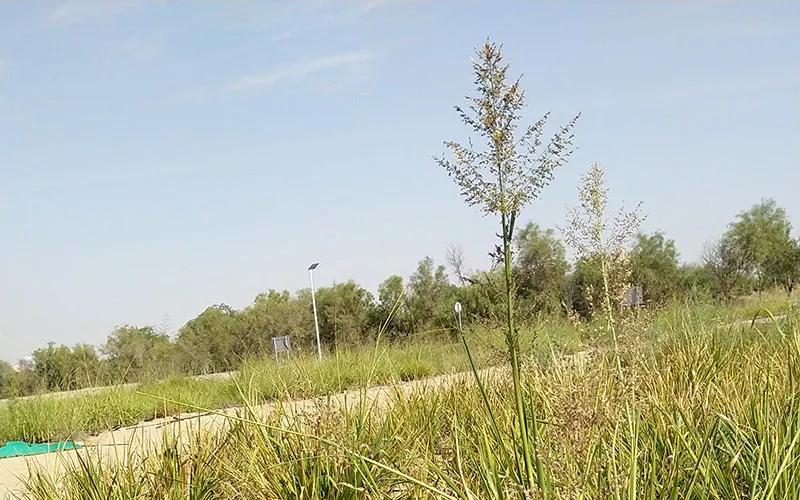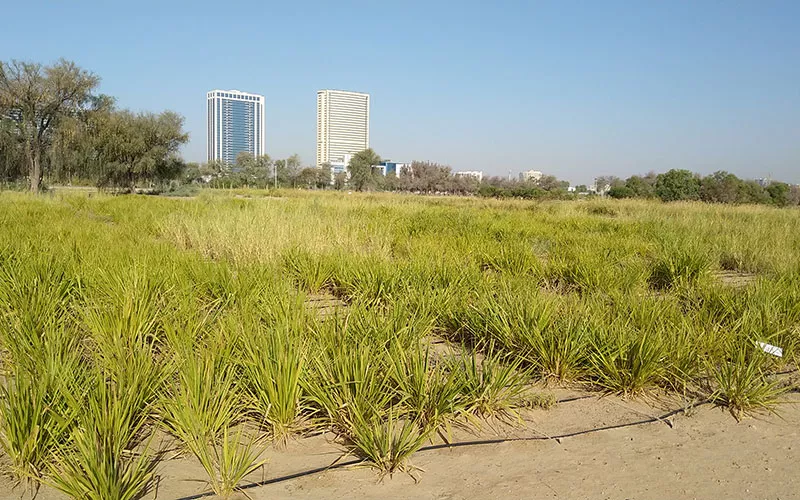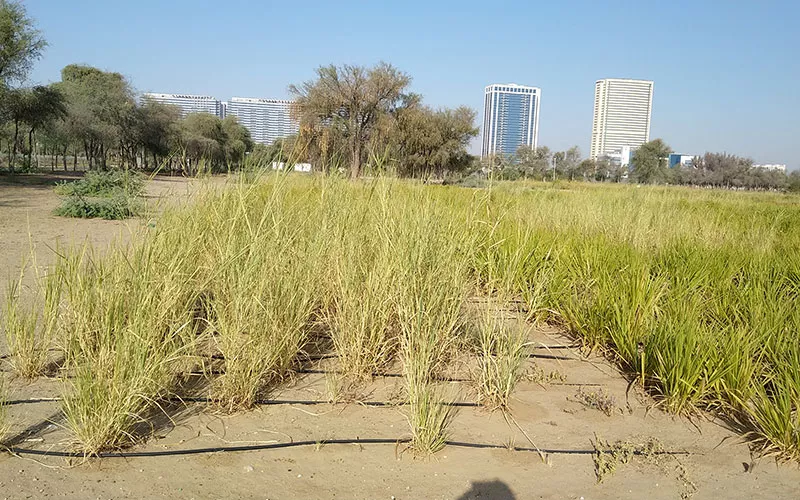Evaluation of Salinity and Irrigation Level Effect on Guinea Grass and Blue Panicum Productivity in Sandy Marginal Soil
Project/Experiment Duration: 2019-2022
Objectives:
- To determine the effect of three saline water and irrigation levels on fresh biomass yield of three cultivars of Guinea grass and one cultivar of Blue panicum.
- To determine the effect of three saline water and irrigation levels on physiological and agronomical plant traits in two plant cultivars.
- To determine the effect of three saline water and irrigation levels on seed yield.
Date of Sowing: December 2019
Experimental Design: Split-plot in randomized complete block
Variables/Treatments:
- Cultivars: Guinea grass (Tanzania, Bombaca, Bombaca F1) and Blue panicum
- Water salinity levels: fresh water, 15 and 25 dS/m
This experiment is conducted as part of ICBA’s extensive research on salt-tolerant grasses. Scientists study the effects of different levels of salinity and irrigation on the productivity of Guinea grass (Megathyrsus maximus) and Blue panicum (Panicum antidotale) in sandy soils. The experiment is specifically focused on:
- Determining the effects of three salinity and irrigation levels on fresh biomass yields of three cultivars of Guinea grass and one cultivar of Blue panicum;
- Investigating the effect of three salinity and irrigation levels on physiological and agronomical plant traits in two plant cultivars;
- Establishing the impact of three saline water on nutritional features on fresh and dry forage.
Season
2019-2020
Research Theme











